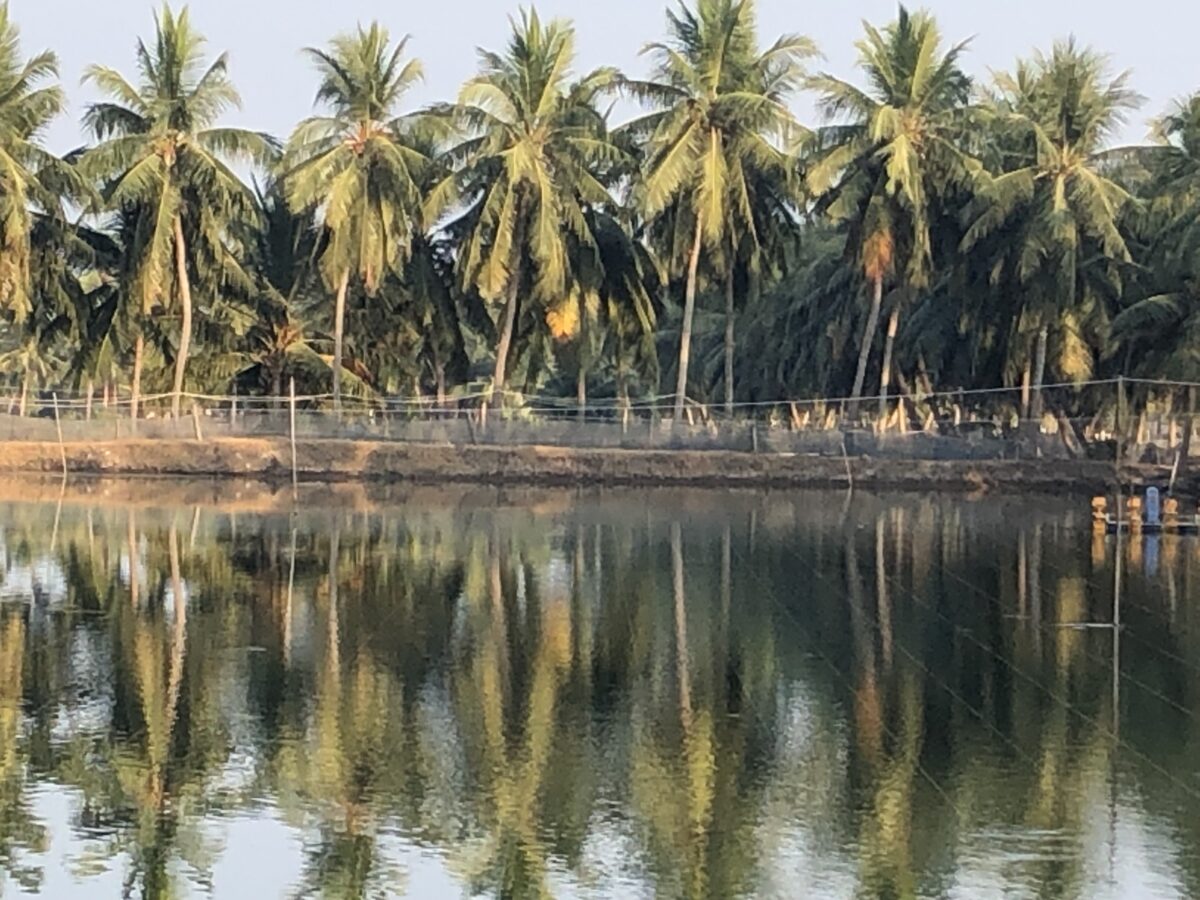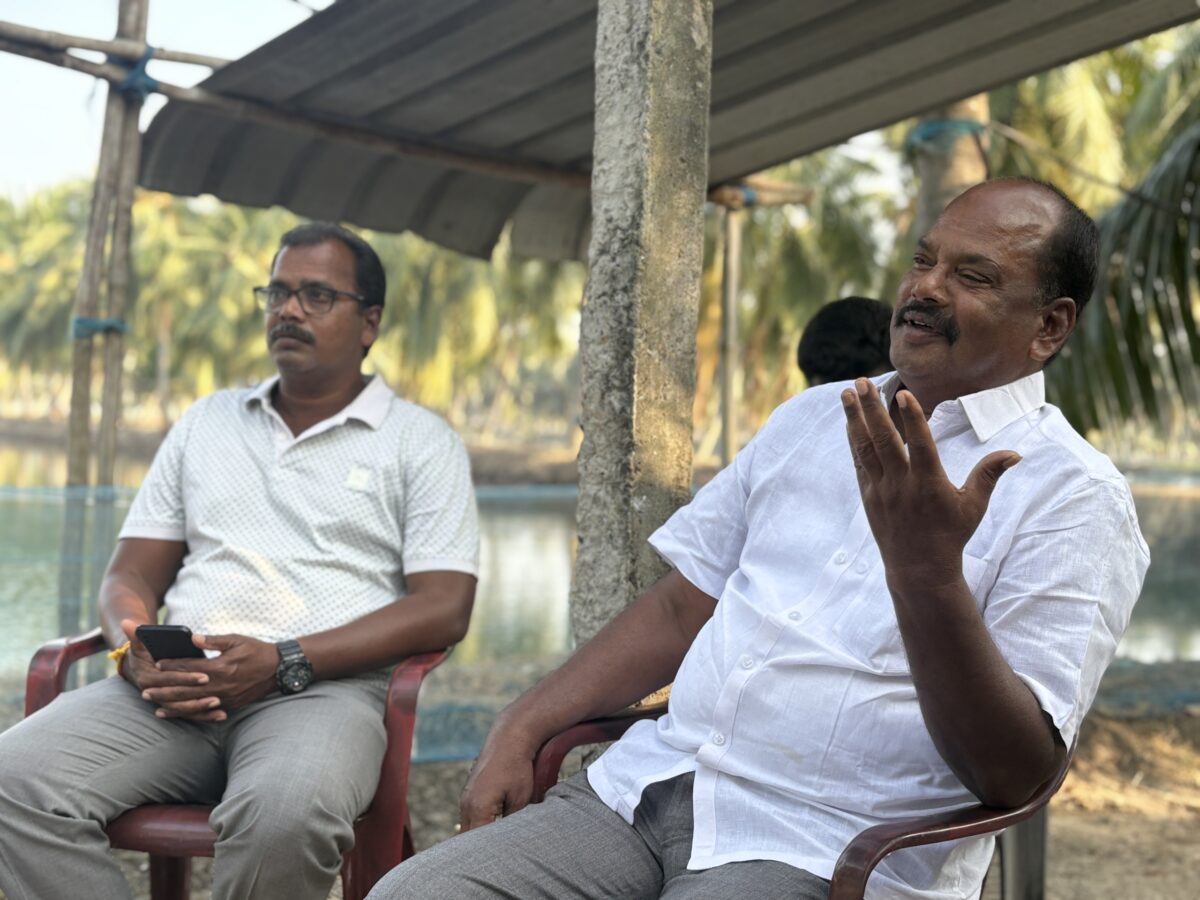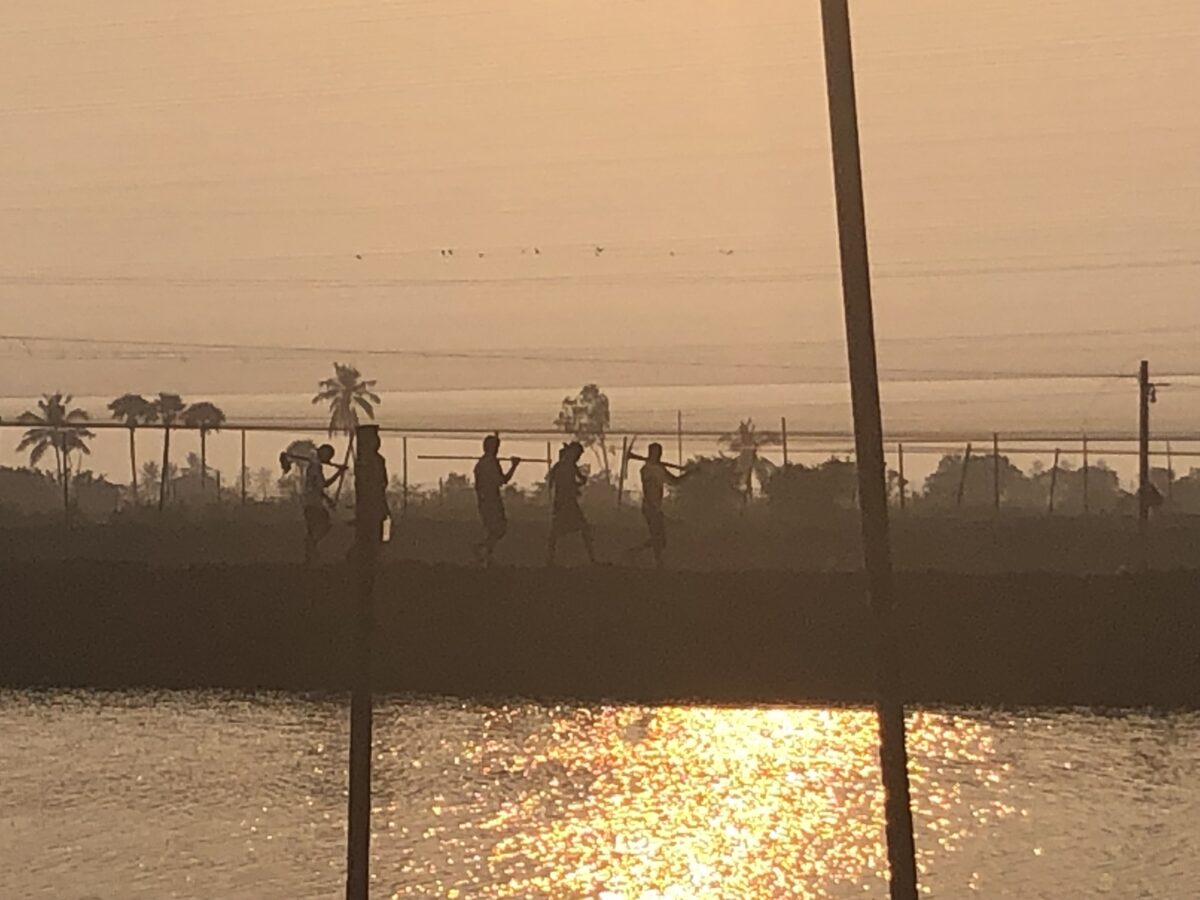I’m back with more on my recent visit to Andhra Pradesh, India, as part of the SFP and Aquaculture Stewardship Council (ASC) delegation. During this visit, we continued to explore the foundation for landscape-level improvements in aquaculture, using shrimp farming as a case study.
To develop a model for landscape-level improvements in aquaculture, we first need to understand the landscape in which shrimp farming operates, the people connected to it, and the organizations working to drive positive change within it.
Put simply, we need to know what issues are being addressed, who is driving improvements, and explore opportunities to build upon these.
In my last blog, I explored the issues and the good work being done by organizations concerning habitat protection and restoration. This time, I would like to highlight the work being done to support small-scale shrimp farmers.
Small-scale shrimp farmers working together
Located just outside of Mogalthuru village, West Godavari, is a group of farms headed by the inspirational Mr. Gubbala Narayana Murthy.
These small-scale shrimp farms, characterized by ponds of 2-3 hectares in size, are easily distinguishable from the more intensive systems we saw elsewhere during our visit. They are integrated with coconut production, and trees planted along the pond walls (bunds) provide additional income sources and shade for humans and wildlife.
Mr. Murthy provided us with a history of the site, explaining how it had originated as a place to demonstrate better management practices developed by an international NGO, the Network of Aquaculture Centres in Asia-Pacific (NACA). Over time, individual farmers came together in groups of neighboring farms known as Aqua Clubs. Ultimately, these developed into formalized Societies, providing farmers with a collective voice and increased bargaining power.
By 2007, this process became institutionalized as The National Centre for Sustainable Aquaculture (NaCSA), an outreach organization under the Indian government’s Marine Products Export Development Authority (MPEDA).
Producing around 400 tonnes of whiteleg shrimp annually with additional shrimp-carp polyculture across 400 acres (~160 hectares), the site serves as an example of how small-scale farmers can come together to successfully engage in shrimp production.
As another example of existing improvements to shrimp production in Andhra Pradesh, this time focused on small-scale farmers, it also raises the possibility of building upon this approach in subsequent landscape-level improvement in the region.
I believe this is also an example that inspires smaller-scale production in other geographies and forms the basis of a story for retailers and suppliers to champion.
In an upcoming blog, I’ll explore how ASC and SFP are leveraging these and other insights from their visit to develop a model for landscape-level improvements in aquaculture. But hopefully, as was the case with habitat protection and restoration, the need to collaborate and build upon what already exists is becoming clear.
Opportunities for the supply chain: Establishing a responsible sourcing area with assurances at scale
You may be wondering why we are doing this, what exactly is a landscape approach, and why you should be interested. Let me explain:
In short, our goal is to work with supply chains to build local capacity for driving improvements and outcomes in aquaculture within a defined area. Despite operating at a larger geographic scale, this approach is designed to complement existing farm-level certification.
I like to think that our challenges span three key areas: production (industry), the natural environment that sustains it (nature), and the workers and communities connected to it (people).
Additionally, by identifying tools to monitor participation and progress, we aim to explore how to provide assurances that production within a given area is becoming increasingly responsible.
With this framework in place, retailers and other buyers will be able to trust that current sustainability priorities beyond farm-level certification are being addressed – and that emerging issues will be swiftly managed as they arise.
If this approach sounds like the commercial market driving development through a holistic, “ecosystem” approach to shrimp farming, then you’re right. As governments reassess their international aid strategies, this creates an opportunity for the market to engage exporters, farmers, and other local stakeholders in shaping the future of sustainable practices.


Credit: Jill Swasey


Credit: Jill Swasey

